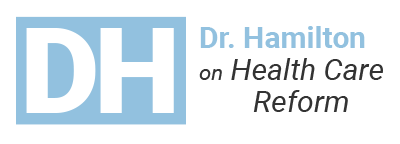This essay is based primarily on two blogs by Brian Blase, President of Blase Policy Strategies, a senior fellow at the Galen Institute and the Texas Public Policy Foundation, and former Special Assistant to President Trump at the National Economic Council.
The term price transparency in health care is rather vague for most of us. In June-July, 2019, President Trump’s administration proposed regulations requiring hospitals to post standard charges, both gross charges and payer-specific, negotiated charges. These charges, a description of services and billing code, in an understandable form, must be posted on the Internet. Hospitals and insurers claim that such transparency could lead to price-fixing and higher prices.
Blase writes, “unknown and obscured prices are unique to health care.” In a market system, the competition must be based on price and quality. In our excellent health care system, there is a great deal of competition based on quality, convenience, and other factors, but not on price.
We do not have a health care system based on insurance. We have a third-party payer system. Most patients are not spending their own money, have little incentive to consider costs, and less opportunity to compare costs between hospitals, insurance companies, medical equipment companies, pharmaceutical companies, and physicians. The provider bills the insurance company, which then pays the provider. Ultimately, the patient pays the difference between the bill and the payment, plus the deductible. So, what is out of control? Cost!
Improving our health care system with market innovations, while avoiding damage to professions, institutions, corporations, businesses, and health service quality is not going to be easy, to say the least. Government control is a poor solution. Not only would there be no choices for patients, but also the difficulty of correcting systemic mistakes in such a system would stymie the innovation that is vital to progress in a market economy.
Innovation and implementation of many cost-control efforts are well underway through legislative and administrative action. These efforts require price transparency. Dr. Blase identifies four key beneficial impacts by which price transparency can help us reform our health care system:
1) Better informed consumers and patients
2) Better informed employers that help workers shop for value
3) Improved ability for employers to monitor insurer effectiveness and eliminate counterproductive middlemen
4) Public pressure on high-cost providers
Better informed patients need price information, incentive, and systems that foster both. Health Savings Accounts and Health Reimbursements Arrangements have repeatedly been shown to lower costs through incentivizing patients and their employers. They will be even more effective with easier access to price information.
The Trump Administration’s Choice and Competition report show that most medical services are for routine problems and are “shoppable”. Another study showed that only 6% of medical spending is for emergencies, which are not “shoppable”. 43% of expenditures are shoppable, as are 11% of pharmaceutical expenses.
However, price transparency alone appears to be an inadequate incentive for patients and their employers to shop for prices. Adding reference pricing (price comparisons between competing providers) to transparency appears to be the key to encouraging both patients and their employers to correct this inadequate “shopping” response.
A study by Safeway showed that price transparency plus reference pricing saved 27% on laboratory tests and 13% on imaging tests. California found that transparency with reference pricing led to increased use of lower-priced facilities and a lowering of prices by about one fifth. Other studies show that younger patients are much more likely to shop online for health care prices (51%).
Price transparency with reference pricing would also minimize “surprise billing (!)”, whereby a patient enters an in-network facility and receives a bill from an out-of-network physician or department, which then is not covered by the patient’s in-network status, leaving the patient to be stuck with the additional bill. Prior to receiving elective services at a hospital, the patient should receive a good faith estimate including all charges and a network listing of all providers and services.
For a more in-depth report on the ramifications of price transparency and reference pricing, I would recommend googling “Transparent Prices” by Brian Blase, co-sponsored by the Galen Institute and the Texas Public Policy Foundation.
Robert F. Hamilton, M.D., FACS





